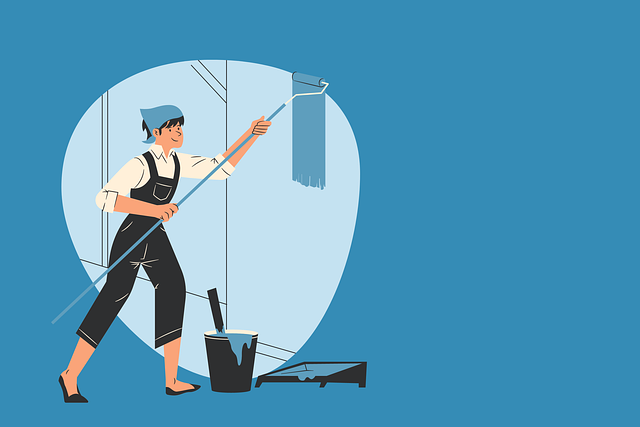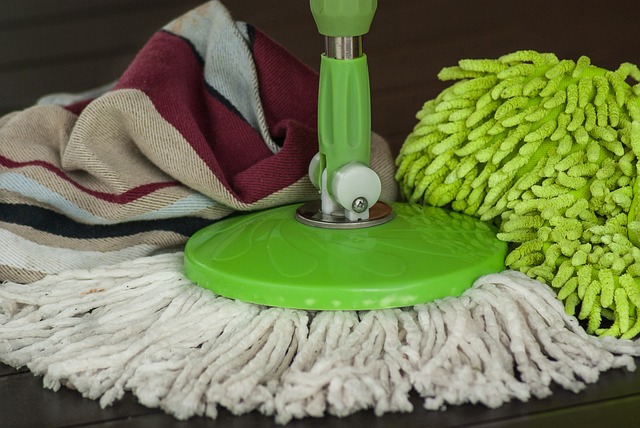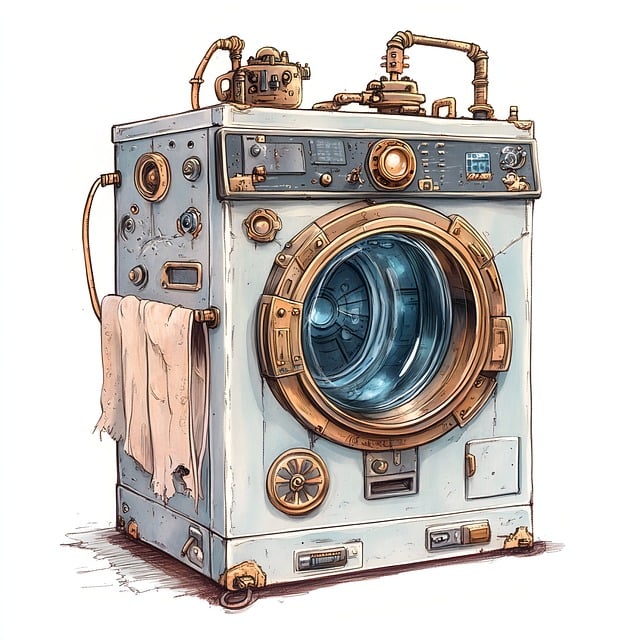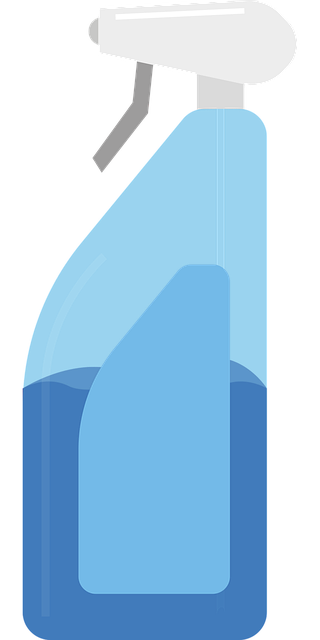Deep cleaning goes beyond regular tidying, focusing on meticulous removal of dirt, dust, and allergens from all surfaces using specialized equipment and tailored products. It's crucial for hygiene, air quality, and preventing bacterial/viral buildup, especially in high-traffic areas like kitchens and bathrooms. Effective deep cleaning involves creating customized checklists, prioritizing hard-to-reach spots with safety gear and suitable tools, and employing natural cleaning solutions for better environmental outcomes. Regular maintenance tips and post-deep cleaning habits ensure a cleaner, healthier living environment.
“Unveil a sparkling clean space with our comprehensive guide to specialized deep cleaning. This article is your ultimate toolkit for achieving impeccable hygiene, from identifying hidden corners needing extra love to mastering the art of disinfection. Learn about essential tools, create customized checklists tailored to diverse spaces, and discover natural solutions for an eco-friendly approach. By the end, you’ll be equipped with the knowledge to maintain a sanctuary that truly sparkles, ensuring a healthy environment.”
Understanding Specialized Deep Cleaning: A Comprehensive Overview

Specialized deep cleaning goes beyond the standard surface-level tidying. It’s a meticulous process designed to eliminate dirt, dust, and allergens from every nook and cranny, ensuring a truly clean environment. This method involves using specialized equipment, techniques, and products tailored to specific surfaces or areas of concern. For instance, it could include detailed cleaning of appliances, windows, flooring, and hard-to-reach areas often missed by regular cleaning routines.
Understanding specialized deep cleaning is crucial for homeowners and businesses alike. It’s not just about aesthetics; it’s about maintaining hygiene and air quality. Regular deep cleaning helps to prevent the buildup of bacteria, viruses, and other microorganisms, creating a healthier living or working space. This comprehensive approach ensures that surfaces are not just visually clean but also germ-free, making it an essential practice for allergy sufferers, individuals with compromised immune systems, and anyone seeking a cleaner, safer environment.
Identifying Areas That Require Special Attention During Deep Cleaning

When it comes to deep cleaning, identifying problem areas is half the battle won. Before you begin, take a close look at every corner and crevice of your space. Kitchens and bathrooms often need extra TLC due to their high traffic and potential for buildup—from greasy stovetops and grimy faucets to tile grout and showerheads. Don’t forget less obvious spots like baseboards, doorframes, and window sills, which can collect dust and allergens.
Paying special attention to these areas ensures a thorough clean. Use appropriate tools and products designed for deep cleaning to tackle tough stains and grime. Regular cleaning routines may not reach these hidden spots, so making them a priority during deep cleaning sessions will result in a healthier, more sanitized environment.
Tools and Equipment Essential for Effective Deep Cleaning

Deep cleaning requires a variety of tools and equipment to ensure effective and efficient results. Essential items include high-quality vacuum cleaners designed for deep cleaning, especially those with detachable attachments for hard-to-reach areas. Microfibre cloths and brushes are indispensable for dusting and scrubbing surfaces without leaving scratches. For tough stains and grime, a pressure washer can be a game-changer, providing powerful jets of water to blast away dirt.
Additionally, investing in specialized cleaning solutions tailored for different surfaces is crucial. These include all-purpose cleaners, glass cleaners, and enzyme-based detergents for tackling organic spills and odours. Safety gear like gloves and masks should also be on hand to protect against chemicals and ensure a healthy cleaning environment.
Developing a Customized Deep Cleaning Checklist for Different Spaces

When it comes to deep cleaning, creating a customized checklist tailored to specific spaces is key. Different areas – from kitchens and bathrooms to living rooms and offices – require unique cleaning approaches due to their distinct features and potential dirt hotspots. For instance, a kitchen demands extra attention to appliances, countertops, and floors given the constant food preparation and traffic. In contrast, a bedroom focuses on dusting surfaces, changing bed linens, and vacuuming carpets.
A comprehensive deep cleaning checklist should account for these variations. Start by categorizing tasks based on room type, then prioritize areas that gather the most dirt or require specialized care. Don’t forget to include regular maintenance tips for optimal cleanliness between thorough deep cleans. This personalized approach ensures every nook and cranny is addressed, making your cleaning routine more efficient and effective.
Strategies for Safely and Efficiently Deep Cleaning Hard-to-Reach Areas

When deep cleaning hard-to-reach areas, safety and efficiency go hand in hand. Start by assessing each nook and cranny to identify potential hazards and plan your approach accordingly. Wear protective gear such as gloves and a mask to avoid direct contact with dust, allergens, or other contaminants. Use the right tools for the job; extendable handles, crevice tools, and microfiber cloths can reach and clean areas that are usually inaccessible.
Regular deep cleaning involves periodic removal of accumulated debris, but for hard-to-reach spots, it may be necessary to employ specialized techniques. Consider using compressed air cans to blow out dust from narrow gaps or vacuum cleaners with attachments designed for intricate details. Additionally, natural cleaning solutions like vinegar or baking soda can effectively tackle tough stains and odors without leaving harsh residues, ensuring a safe and thorough deep clean.
The Importance of Disinfection: Products, Techniques, and Best Practices

Deep cleaning involves more than a surface scrub; it’s about ridding spaces of harmful germs and bacteria to create healthier environments. Disinfection plays a pivotal role in this process, as it ensures that surfaces are not just clean but truly sterile. Effective disinfection is crucial, especially in high-traffic areas or for individuals with compromised immune systems.
Choosing the right products is key. This includes disinfectants with proven virus- and bacteria-killing claims, such as those containing EPA-registered ingredients. Techniques like multi-surface cleaning, using microfiber cloths to trap particles, and high-pressure water jets for tough stains are also essential best practices. Remember, proper ventilation during disinfection is vital to prevent the spread of airborne contaminants.
Incorporating Natural Cleaning Solutions into Your Specialized Deep Cleaning Routine

Incorporating natural cleaning solutions into your specialized deep cleaning routine offers a multitude of benefits, both for your home and the environment. Many conventional cleaning products contain harsh chemicals that can leave behind residues and contribute to air pollution. Natural alternatives, on the other hand, provide effective cleaning performance while being kinder to our planet. Essential oils, for instance, are powerful natural disinfectants and deodorizers, making them excellent additions to your deep cleaning arsenal. They not only eliminate odors but also add a refreshing aroma to your spaces.
Plant-based cleaners, such as those derived from citrus fruits or vinegar, are versatile and cost-effective. These solutions can tackle a wide range of cleaning tasks, from cutting through grease on stovetops to removing stubborn bathroom stains. By opting for natural cleaning solutions, you’re not just reducing your exposure to potentially harmful chemicals but also contributing to a more sustainable lifestyle. This eco-friendly approach ensures that your deep cleaning routine is both thorough and responsible.
Tips for Maintaining a Clean Environment Post-Deep Cleaning Session

After a deep cleaning session, maintaining a clean and hygienic environment is crucial for several reasons. Firstly, it helps to prevent dirt and bacteria from accumulating again, ensuring your space remains fresh and safe. Regular wiping of surfaces with disinfectant wipes or sprays can go a long way in this regard. Emptying trash cans promptly and regularly washing linens, such as curtains and bedding, are also essential practices.
Additionally, keeping personal items organized and in their designated places can reduce clutter, making it easier to spot and address any dirt or grime that may appear. Encouraging everyone in the household to participate in these maintenance tasks can create a cleaner, more healthy living environment. Simple habits like putting away toys, hanging up clothes immediately after use, and regularly sweeping floors contribute significantly to post-deep cleaning upkeep.
